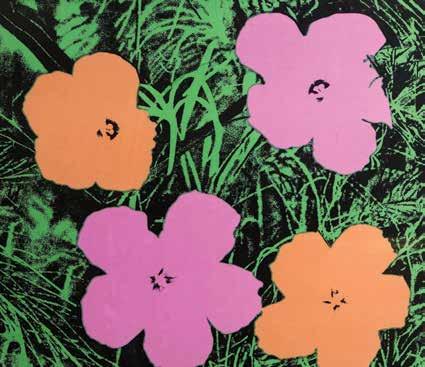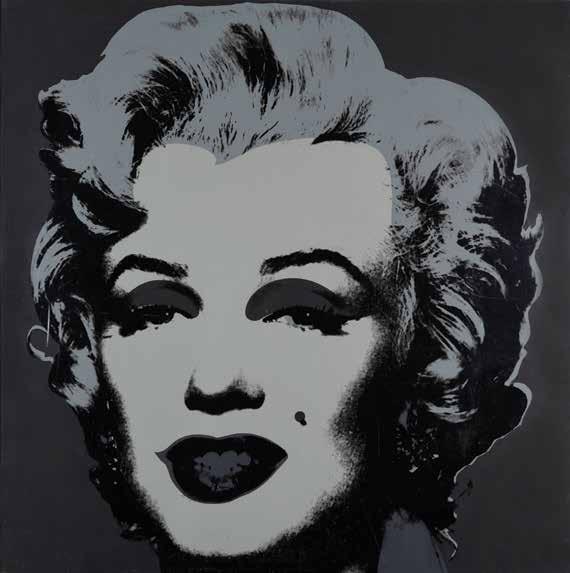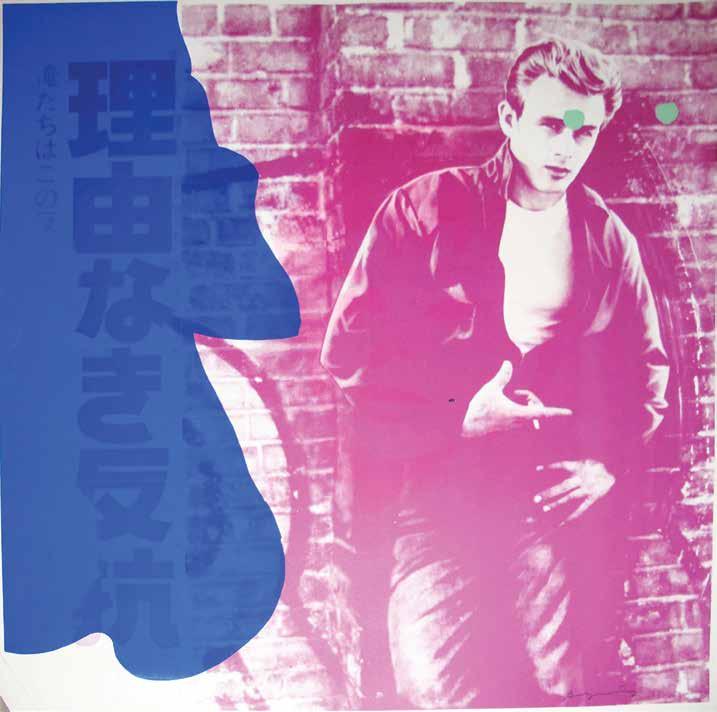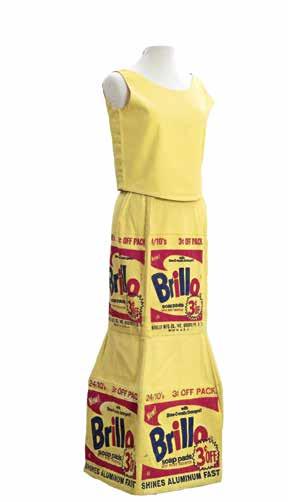
4 minute read
Tutto il Warhol che ti aspetti Warhol galore
Fino al 26 marzo la Fabbrica del Vapore di Milano ospita la mostra che documenta il percorso artistico e umano del grande innovatore d’Oltreoceano Warhol Galore An exhibition open until 26 March 2023 at the Fabbrica del Vapore in Milan illustrates Warhol’s professional and personal development by LUIGI AMBROSETTI
Campbell’s Soup (Tomato), 1968. Serigrafia su carta Screen-print
Advertisement
Tutto il Warhol che ti aspetti
Dagli oggetti simboli del consumismo, ai ritratti dello star system degli anni ’60; dalla serie degli anni ’70 dedicata alle drag queen, fino agli anni ’80, in cui l’artista rivela il proprio rapporto col sacro. È quanto documenta l’interessante mostra “Andy Warhol. La pubblicità della forma” in corso alla Fabbrica del Vapore di Milano. “Warhol – spiega Bonito Oliva, uno dei curatori della mostra – è il Raffaello della società di massa americana che dà superficie ad ogni profondità dell’immagine, rendendola in tal modo immediatamente fruibile, pronta al consumo come ogni prodotto che affolla il nostro vivere quotidiano”. L’intuizione a cui Warhol deve fama e successo? Quella di ripetere un’immagine più e più volte, in modo tale da farla entrare per sempre nella mente del pubblico e da trasformare qualsiasi opera d’arte in opera di tutti e per tutti. Un modo di comunicare l’idea della ripetizione e dell’abbondanza del prodotto, tipica della società dei consumi. Tanto che secondo Edoardo
Icona
Marilyn, 1967. Serigrafia su carta
Icon
Marilyn, 1967. Screen-print
Untitled (Flowers), 1983-85. Serigrafia su seta Silkscreen


From his symbols of
consumer society to his sixties portraits of the star system and his seventies series dedicated to drag queens, through to his eighties works on religious themes; all this is amply documented in the fascinating “Andy Warhol. The Advertising of Form” exhibition at the Fabbrica del Vapore in Milan. “Warhol is the Raphael of the American masses” explains Bonito Oliva, one of the curators. “He provides surfaces to all the depths of an image, rendering it immediately available, ready for instant consumption like all the other products crowding our daily lives.” So what was the secret of Warhol’s success? The idea of repeating the same image over and over again, fixing it in the public mind and transforming any work of art into art for all, a supremely effective way of communicating the idea of repetition and abundance so typical of our consumer society. Indeed, Edoardo Falcioni, the other curator of the exhibition, holds that Warhol’s masterpiece were his Brillo Boxes, sculptures faithfully reproducing the boxes of Brillo pads on sale in every
Ads Rebel Without A Cause, 1985. Serigrafia su Lenox Museum Board, Unique Trial Proof Ads Rebel Without A Cause, 1985. screen-print on Lenox Museum Board, Unique Trial Proof


Michael Douglas, Yoko Ono, Andy Warhol e Jann Wenner, 1980 circa. Stampa in gelatina d’argento (foto Venturini) Michael Douglas, Yoko Ono, Andy Warhol and Jann Wenner, circa 1980. Silver gelatine print (photo Venturini)
Andy Warhol’s Velvet Underground featuring Nico, 1970. LP originale autografato Original signed LP sleeve

Falcioni, l’altro curatore della mostra milanese, il vero capolavoro di Warhol sono state le Brillo Box, sculture identiche alle scatole di pagliette saponate “Brillo” in vendita nei supermercati. “L’evento che rese queste opere tra le più celebri dell’intera storia dell’arte – scrive Falcioni – fu la personale dell’artista presso la Stable Gallery di New York, tenutasi nel 1964: queste sculture furono disposte all’interno dello spazio espositivo tutte in fila e una sopra all’altra, proprio come se si trattasse di un supermercato piuttosto che di una galleria d’arte”. Ed è proprio in virtù di questa mostra che Warhol viene arruolato nella scuderia di un famoso gallerista newyorchese, Leo Castelli, e che la sua carriera artistica decolla: nasce la celebre “The Factory”, dove uno stuolo di solerti assistenti crea a ritmo frenetico quadri, film, cover musicali, sculture e copertine di riviste, e dove Warhol accoglie attori, musicisti, scrittori ed esponenti del mondo creativo newyorchese. Molte altre Factory prendono vita a New York e nel frattempo Warhol accoglie nella sua cerchia una nuova generazione di artisti come Basquiat, Haring e Scharf, riuscendo così a rinnovarsi e a ideare le ultime sperimentazioni iconiche. Andy Warhol muore nel 1987, dopo aver cambiato per sempre la storia dell’arte: alla Fabbrica del Vapore capirete perchè.

Colpo di genio
Brillo Box Dress, 1964. Serigrafia su tessuto
Stroke of genius.
Brillo Box Dress, 1964. Screenprint on material
supermarket. “The event that secured these a place in the hall of fame of the history of art was Warhol’s one-man show at the Stable Gallery in New York in 1964, writes Falcioni, where these sculptures were lined up one on top of the other just as they would have been in a supermarket rather than an art gallery.” This was the exhibition which earned Warhol his place in the firmament of the famous New York gallery owner Leo Castelli and launched his stellar career as an artist, leading to his fabled “The Factory”, where a gaggle of zealous assistants worked frenetically to churn out pictures, films, album covers, sculptures and front pages for magazines and where Warhol gathered New York’s actors, musicians, writers and creative intellectuals. Many other Factories followed in New York and in the meantime Warhol became the guru of a new generation of artists like Basquiat, Haring and Scharf, who infused him with new creative lifeblood and the inspirational spark for his last iconic experiments. Andy Warhol died in 1987, his achievement was to change the course of the history of art: visitors to the exhibition at the Fabbrica del Vapore will understand why.










